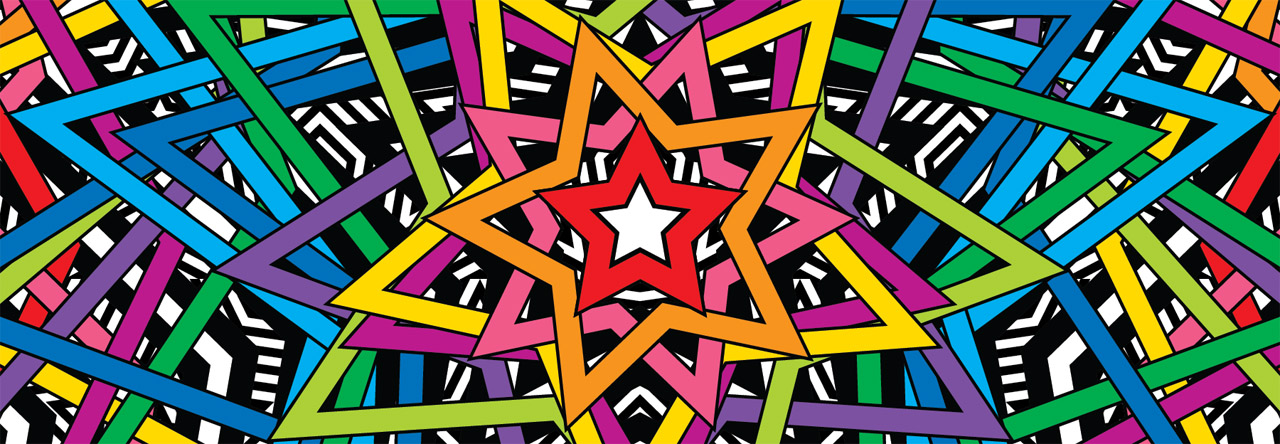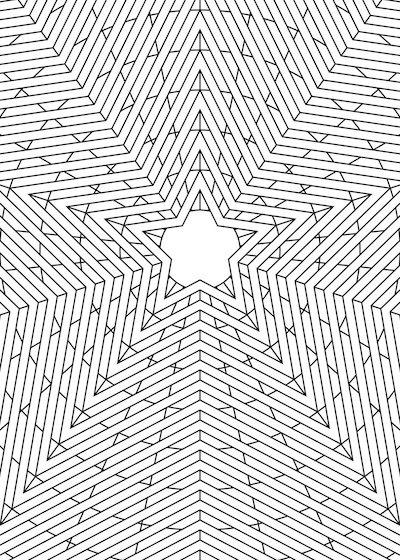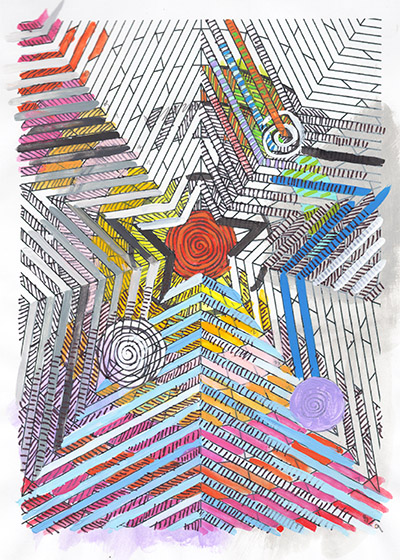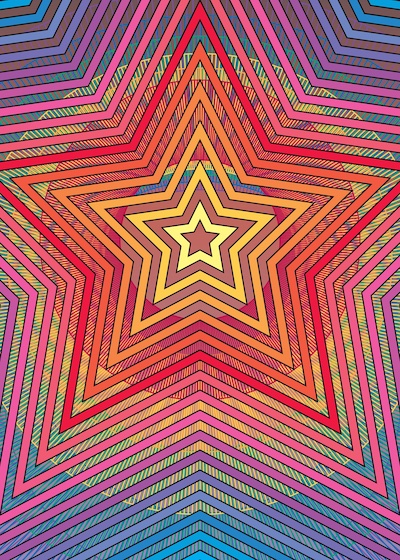From 2009 through 2022, I completed fourteen seasons of birthday card paintings. But I confess, this fall I had some trouble mustering enthusiasm for another round.
The idea to do new art using Adobe Illustrator was intriguing. I’m still a novice with the software, and enjoy learning things. Also, it could be a step toward turning card art into animation. But I know friends really like the hand-painted designs; a few have kept collections of all the ones I’ve sent. I worry that digital art won’t carry the same emotional weight.
Before diving in with both feet, I decided to try a hybrid: making my underlying geometry in Illustrator, then coloring and embellishing it with traditional paints.
“Hybrid” and “geometry” sound fancy. But there’s no way around it…
This looks like a coloring book.
I explored a couple of different approaches, trying to obscure the machine-precise stars, circles, and rays. Crosshatching was promising. And it seemed like color gradients might be helping. I wouldn’t send this experiment to someone as a birthday card — but as a piece of ephemera, I kind of like the mix-and-match aesthetic.
After a couple hours, I set the test aside.
This coloring book concept doesn’t seem like a good basis for a series. Even if crosshatching and gradients panned out, wouldn’t I need to go back into Illustrator to build additional geometries? I suppose I could just decorate this one design in different color schemes — but that seems pretty tedious.
Having now built concentric stars for both Public Access Xanadu and the coloring book experiment, I felt ready to try my first real improvisation in Illustrator.
I try to treat birthday card art like visual jazz. I like how the 5×7″ picture frame can usually be filled in a single sitting… Letting the colors and forms reveal themselves moment-by-moment, with basically no advance planning.
This first improv barely merits the name. Mostly, I just added colors to the recycled stars. Plus repetitions in the background of a single element at different scales. But, oh, the colors! So rich! And there’s proof of concept here that I can build complexity. I know I can do better — but in a pinch, I’d be willing to put this image in an envelope.
Decision made. I’ll gamble on something unfamiliar but exciting. The next round of cards are going to use vector art.



